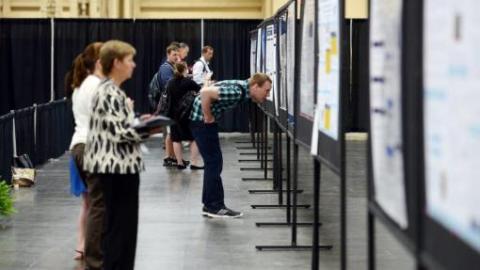
For the first-ever research issue of NATA News last month, we used Twitter (@nata1950) to ask members to share their current athletic training research projects. These are some of the responses we received. Following submissions from our members, we are looking forward to what’s on the horizon for the profession.
1. MICHELE RAYA, PHD, ATC, PT, SCS
University of Miami
At the University of Miami, ATCs and PTs are currently developing a performance-based outcome measure called the Comprehensive High-level Activity Mobility Predictor-Sport (CHAMP-S). Originally intended for use by injured soldiers, the CHAMP is now being modified for use by collegiate athletes. The measure is designed to assess the athletic ability of individuals, compare athletes within the same sport, screen for risk of injury, diagnose specific weaknesses, monitor changes throughout rehabilitation and determine readiness to return to sport.
2. YUM NGUYEN, PHD, ATC
High Point University
Faculty at High Point University focuses on the neuromuscular and biomechanical factors that may increase the risk of knee injuries particularly in young athletes throughout maturation. In addition to their work, these researchers are most proud of their success in incorporating undergraduate athletic training students in applied research. High Point has managed to establish a sustainable undergraduate research program in which students collaborate with faculty across multiple health sciences disciplines. Several undergraduate students have presented findings at professional meetings such as NATA and ACSM conferences, and projects have also been published in various peer-reviewed sports medicine journals.
3. BRITTNEY LUC, MS, ATC
University of North Carolina at Chapel Hill
Luc and fellow researchers are questioning the long term benefits of ACL reconstruction. An ACL injury significantly increases the risk of developing knee posttraumatic osteoarthritis (PTOA); however, research results indicate that ACL reconstruction is not beneficial for decreasing the prevalence of knee PTOA compared to remaining ACL deficient. The team found five different interventions that had been used in an attempt to increase quadriceps activation, although further research is needed to determine the true effectiveness. These interventions may be beneficial in decreasing the risk of PTOA following ACL injury and reconstruction.





